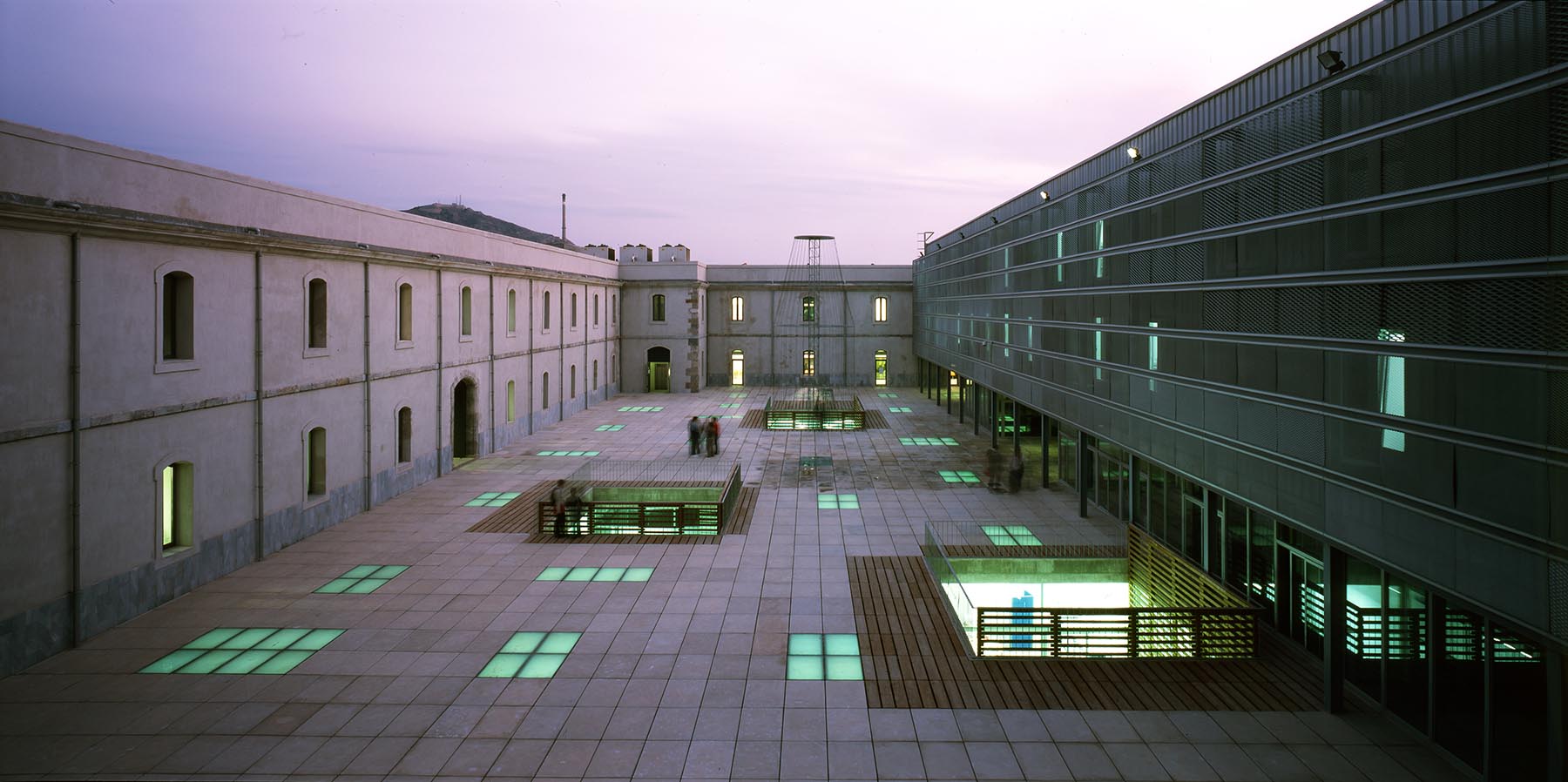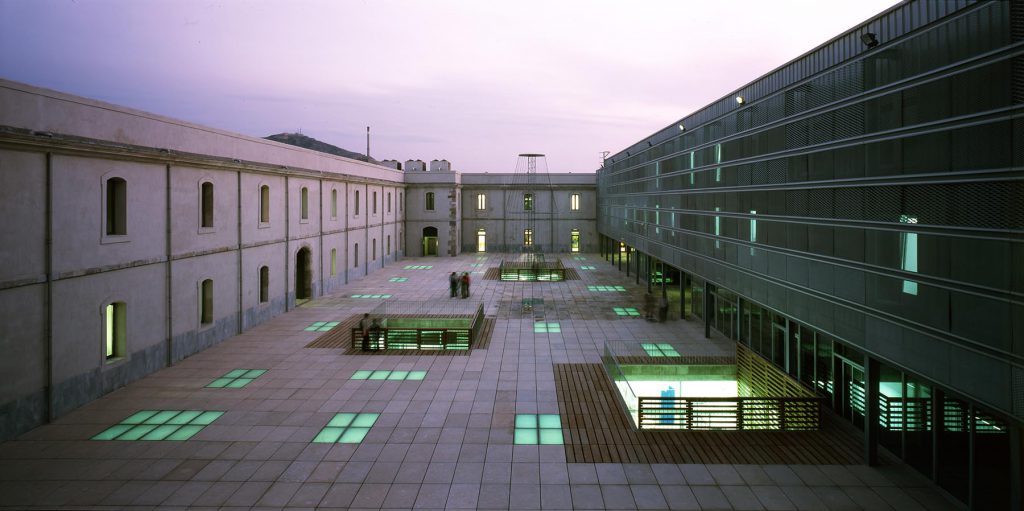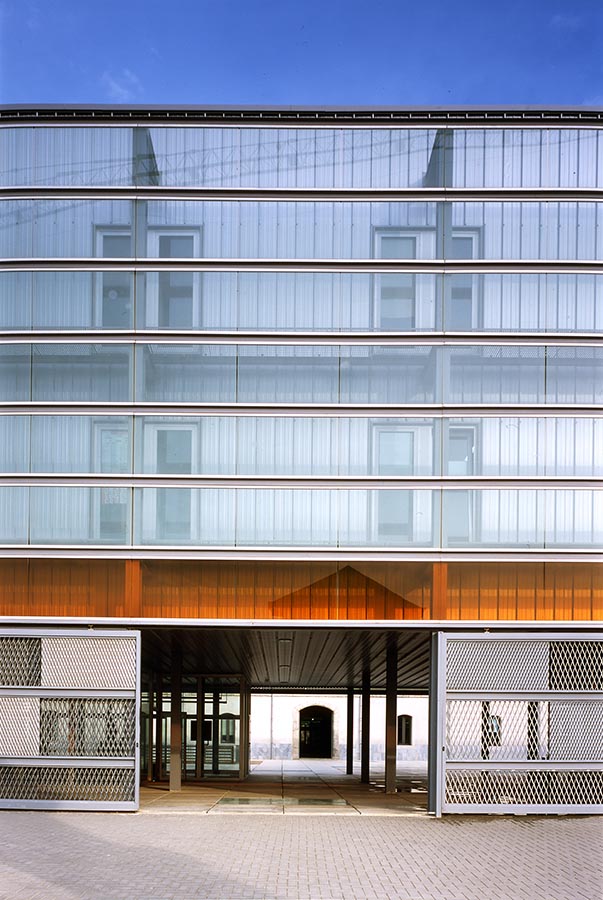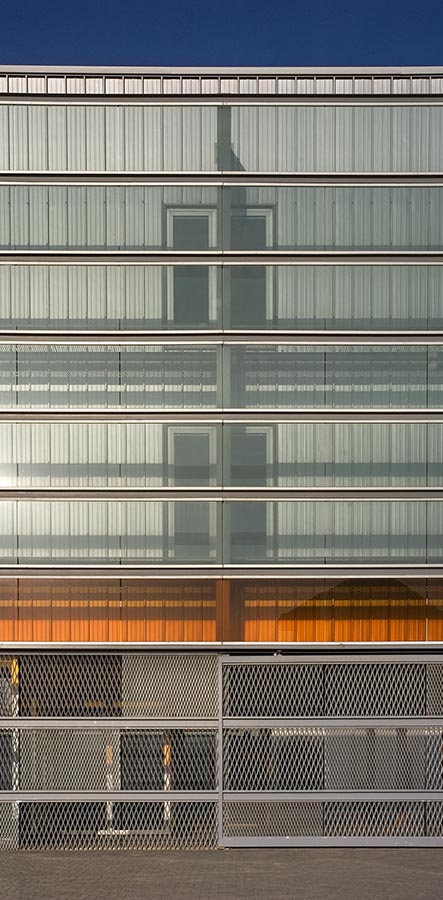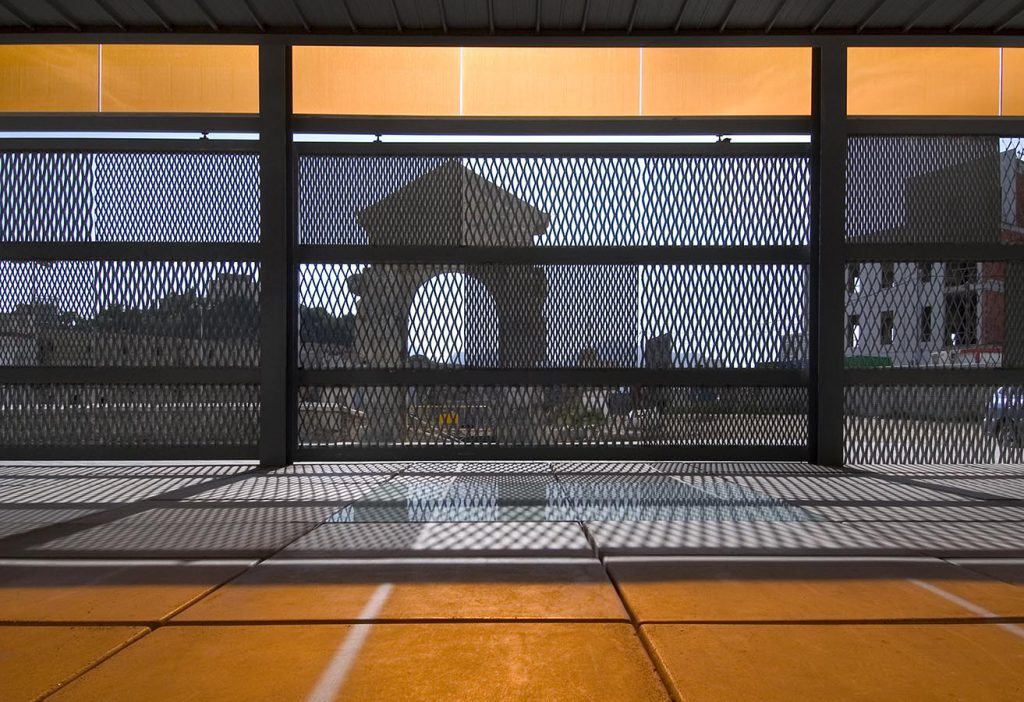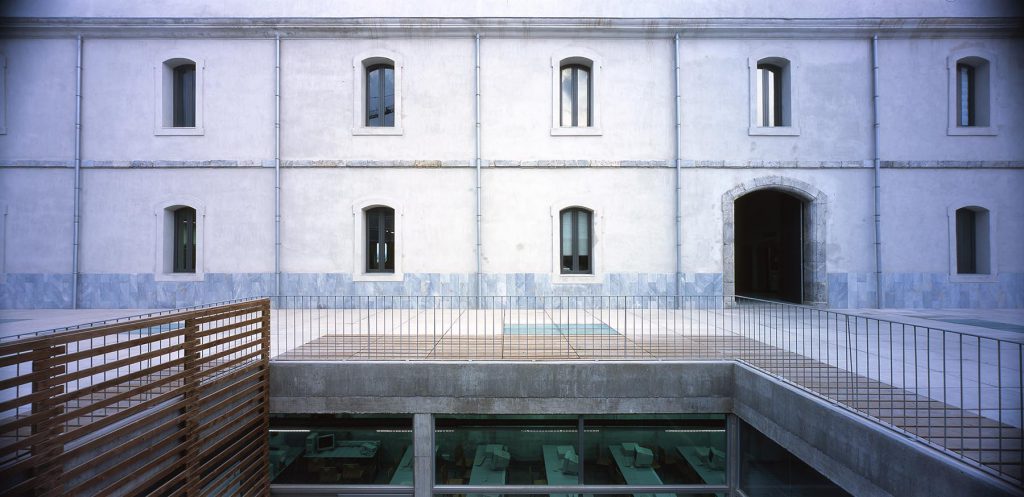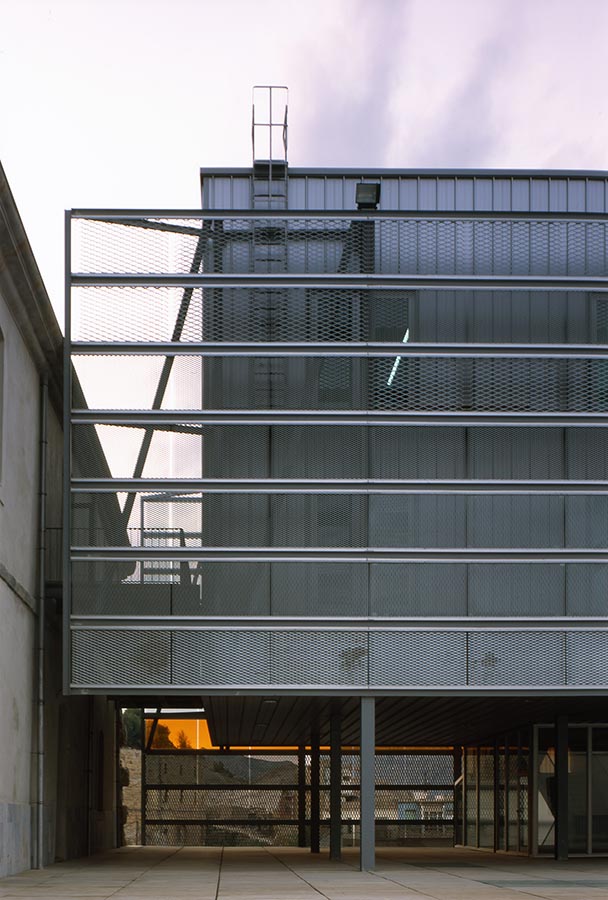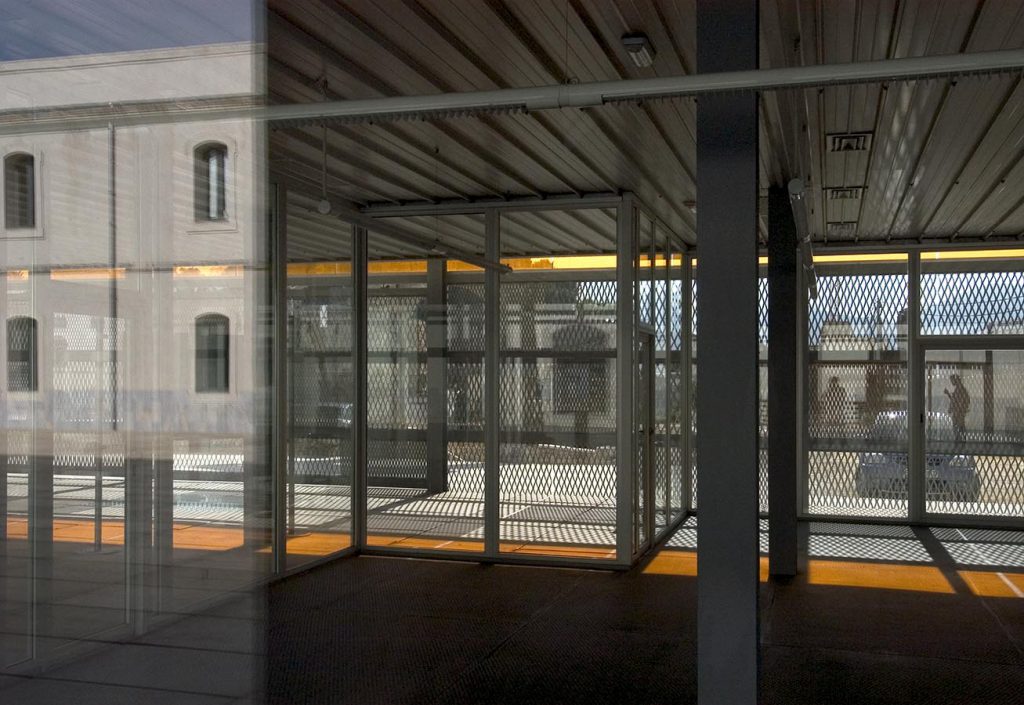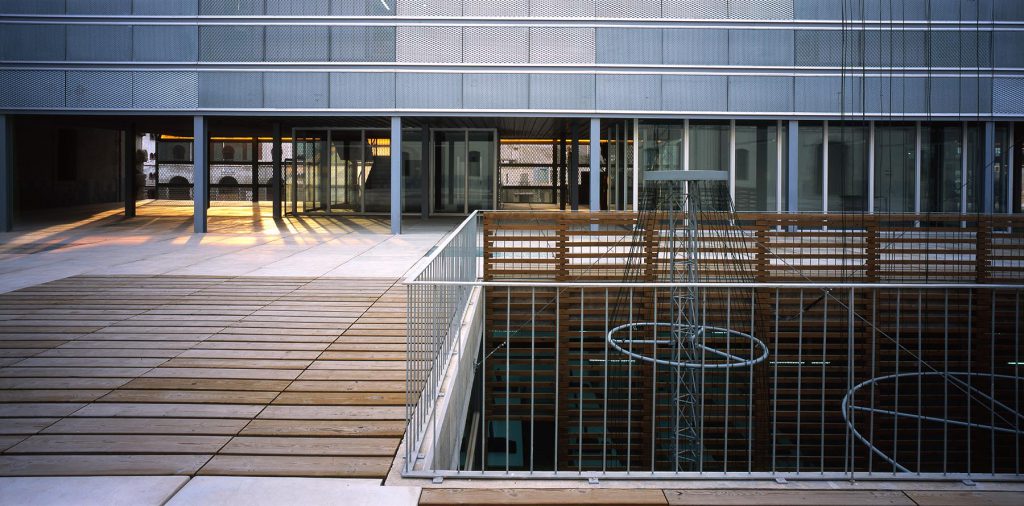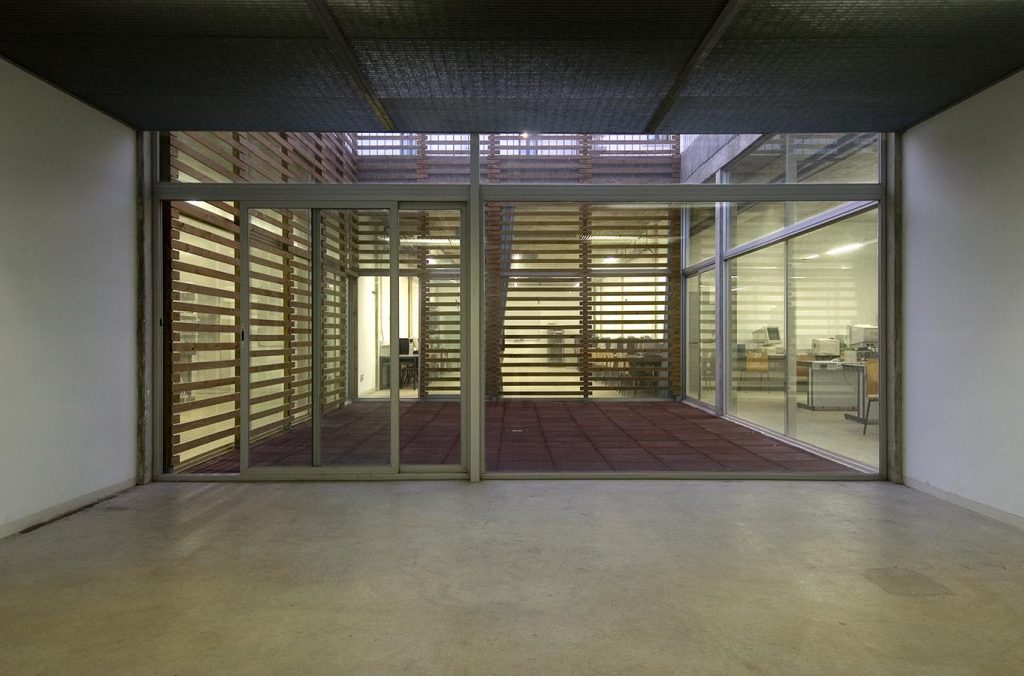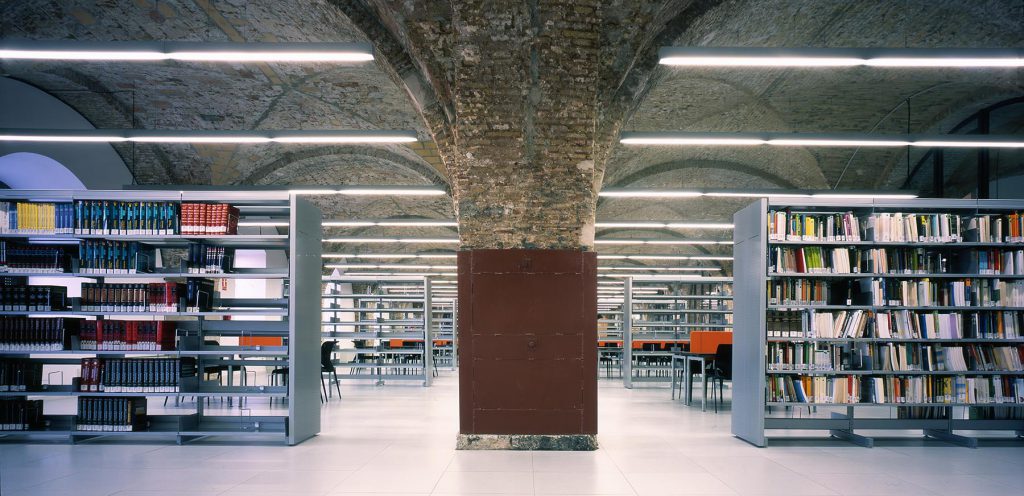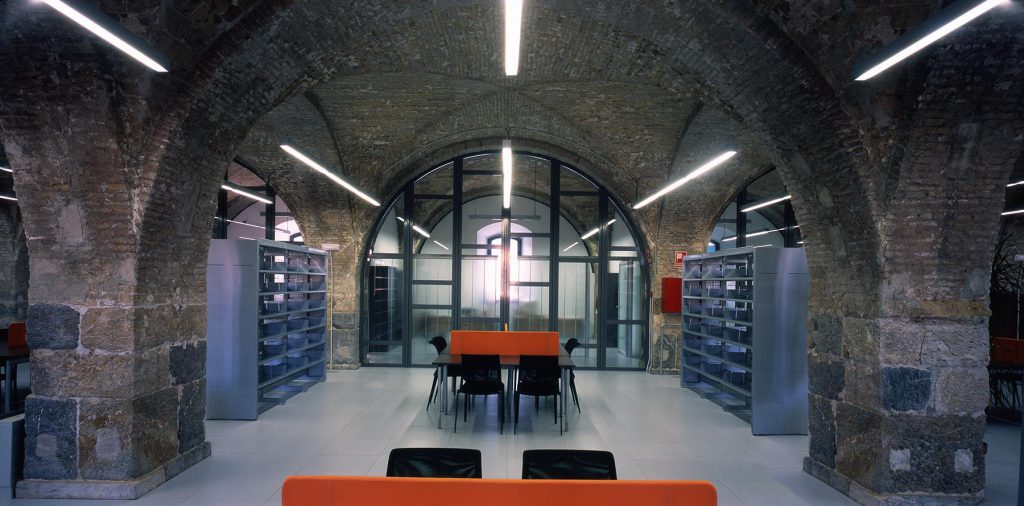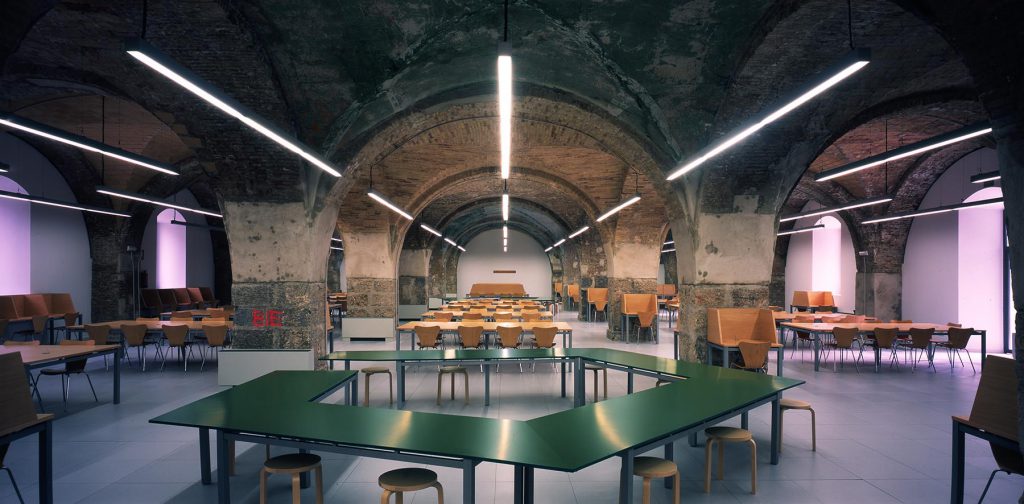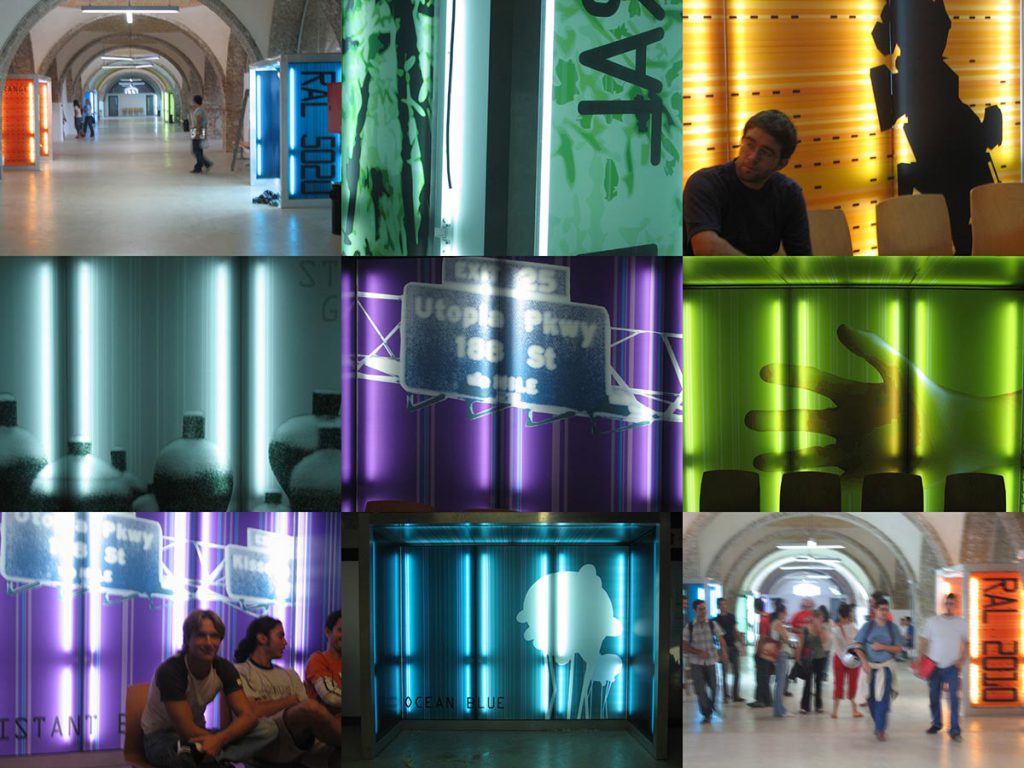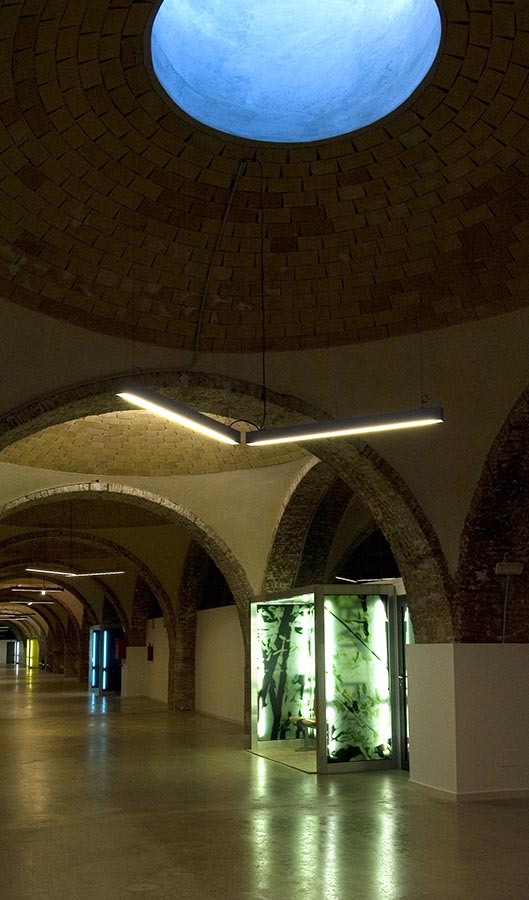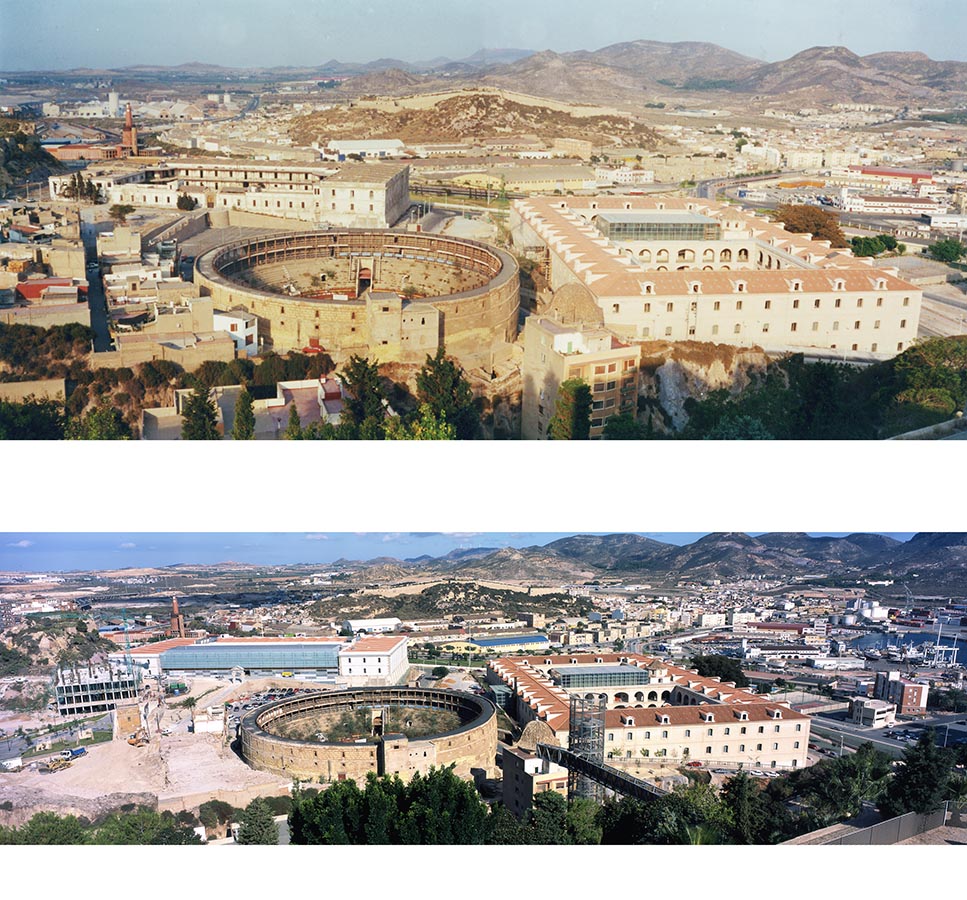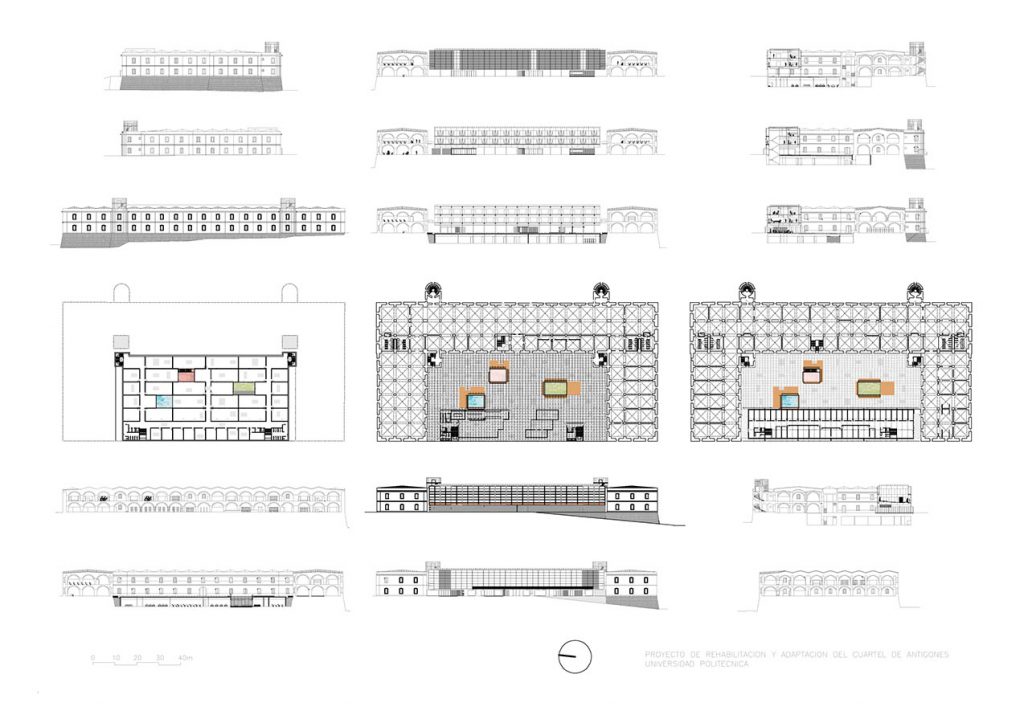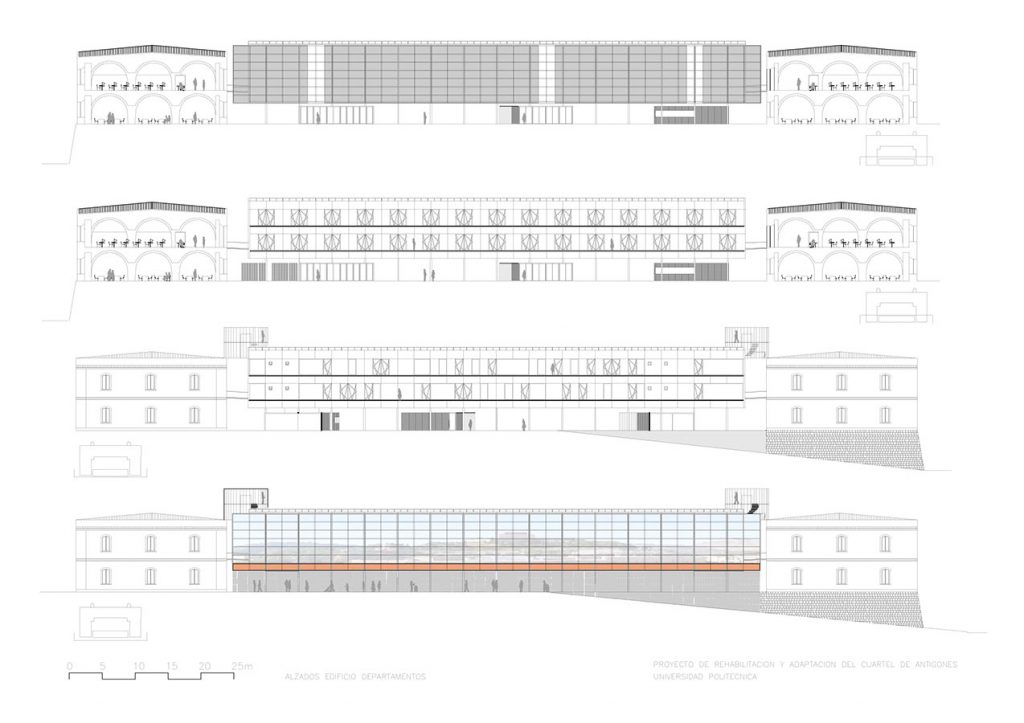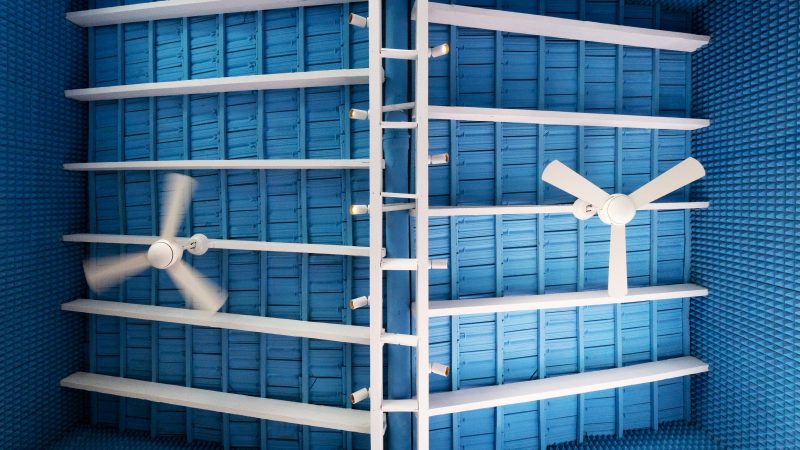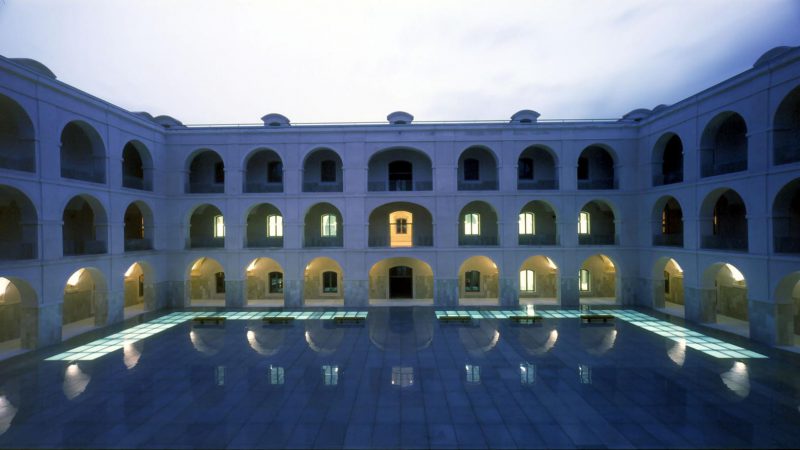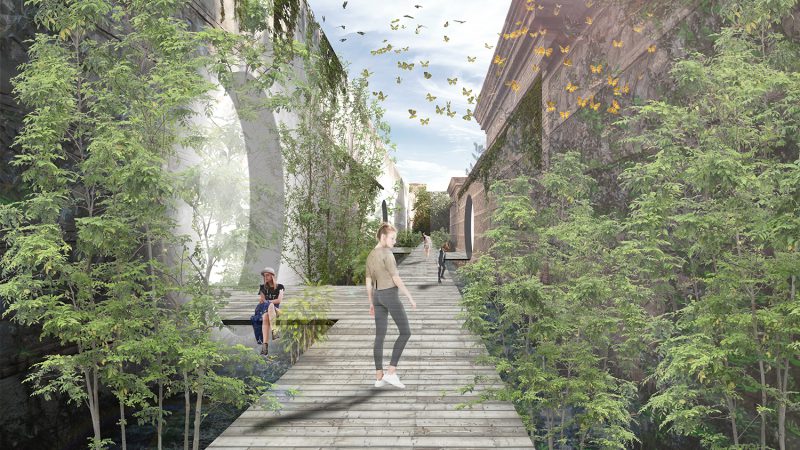All buildings are intelligent, such as men who have built them and used them. They have soul, and double memory, an individual and a collective one (the memory of its time). Also they have a selective memory, which keeps the best of the evolutionary process. This let them progress and survive the time goes by (the passage of time).
The renovation and adaptation of old buildings – that has the main objective of persevering them- is a rigorous and precise action that has to respond to a modern and open attitude, taking into account the history of the building and the memory of the place, it is not only something aesthetic.
The interventions which follow these premises contain a cultural fund and inquiring spirit with a conceptual commitment with its time.
The project attempts to ‘rescue’ the whole building keeping its entire value, including the surroundings of the building (university campus), and the city.
The process begins trying to correct existing distortions by working on the spatial condition of the barracks (a military construction of the XVIII century), linked directly to their structural and constructive characteristics.
With this background, we obtain a double effect:
– Three buildings (north, south, and east) are recovered keeping its original values (vaulted naves, with continuous spaces).
– A new building is created in the west orientation replacing another constructions (surveillance buildings), that aren’t original and don’t have historic value.
The rehabilitation of the existing building focuses in its scale and proportions rather than constructive aspects. The main interventions are the rehabilitations of the East and South buildings and the renovation of the lost areas (North and Guard construction).
All this is summarized in the creation of open spaces that suit the principal program zones and get completed with small pieces that have different uses and maximize de main scale of the vault space.

